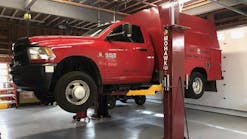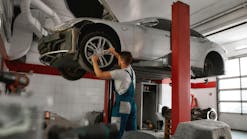How to increase your average repair order
Content brought to you by Motor Age. To subscribe, click here.
What you will learn:
- How to find your average repair order cost
- How to control the sales process by building a relationship with and educating your customer
- Why embracing maintenance can add value to your customers' experience
A common question I receive when talking to my auto repair shop owners is why their average repair order is so small. Of course, there are many answers to this question. Understanding how to find the average repair order cost is one step in the right direction. But just like with any business, one of the most important factors in increasing the average repair order for your business is to take good care of your customers.
How to find the average repair order cost
So, I asked a shop owner how big the estimated average was and he told me it was below $750. I knew that we were not asking for enough. If your estimated average is not tall enough, you will never get the correct average repair order. The rule of thumb is it will cost $100 for every 10,000 miles until you reach 75,000 miles. Then you include shocks and struts into the mix and the estimated average goes way up from there.
If the average mileage of the vehicle your shop works on is over 100,000 miles, what should the estimated average be? Consider as well shocks, struts, fluid exchanges, filters, belts, hoses, timing belts, spark plugs, balance, alignments, and battery services added to the safety and repairs. At this point, why not stop reading and open a work order and build a maintenance estimate only with the items mentioned above on it. Then, if you have not been recommending these items, you can add the estimated average that you have been running with repair and safety to it. I bet the number will blow your mind.
Take care of your customers
If you have not been selling a substantial number of these, then are you taking care of the customer? Are you doing what is right to make their car last as long as it should, or are you starting to act like the dealers? The reason the automotive aftermarket even exists is that some car dealers treated customers badly. They had the wrong mindset. What is your mindset? Are you too busy to take care of the customer? Are you controlling the sales process or being controlled?
There are a few reasons why shops choose not to sell maintenance, but none of these reasons make sense once you investigate. If you Google "Five monkeys in a cage," you will find that the moral to that story is the excuse, "It has always been that way around here." If we are not changing with the times, we might plateau. So, we might need a new way of thinking.
According to Edmunds.com, the cost per mile on repair and maintenance is about 15 cents, and the cost of an average new car (if you can find one right now) is around 75 cents per mile for the first 75,000 miles. A normal five-year-old used vehicle is around 50 cents. Try doing the math for your customers. It makes selling maintenance a lot easier.
How to control the sales process
One of the main reasons we want a bigger average repair order is to keep the tech and writer on the car longer. This means less "churn and burn." But the main reason is to take care of the customer while taking control of the sales process. Let's walk through the sales process with a typical new client:
- Set the appointment
- Meet and greet the customer
- Build a relationship with and educate the customer
- Write them up on the computer
- Do the digital visual inspection or what we used to call the "courtesy check."
- Build the estimate and source the parts
- Call the customer and present the estimate
- Cash the customer out even if they did not buy anything extra
Time is of the essence when taking control of the sales process. Let's say it takes a technician 30 minutes to complete a digital vehicle inspection (DVI). Done properly, DVIs will take every minute of that time. A tech who works on four cars per day loses two hours per day in productivity time, and the shop did not make any money. So, 10 to 15 hours were wasted in a 40-hour workweek. Then, we must try to make up this time so that the tech's billed hours that we collect money for is at least 90 percent.
Embrace maintenance
We must find ways to get and keep employees who do not churn and burn cars. We can take care of the customer both externally and internally by embracing maintenance.
What percentage of maintenance do you think your shop is selling as a percent to repairs right now? I started asking this question to shop owners and the average response was 40 to 50 percent. Most people did not even ask what the right percent would be to begin with.
After more research, other people confidently stated 60 percent maintenance to 40 percent repairs. Let me tell you — this is incorrect. These numbers are not proven anywhere, based on anything, nor are they tracked! Most shop owners only track percentages when asked.
The real answer is that it depends on your belief. I want my shops to get 50 percent maintenance compared to repair without the repair going down. Do the math on that one day. Say you are generating $20,000 per week, and you are only spending 10 percent on maintenance. This is the average that most shops start at once technicians figure out how to track it. Tracking is simple in most systems, with either maintenance as a group or putting the list in as menu items. Don't forget to add oil changes and maintenance to the list.
Let's consider $20,000 in sales per week with 10 percent maintenance (that's $18,000 in repairs and $2,000 in maintenance). So, getting to the "Promised Land" would be 50/50 without going down on repairs. This way, you would gain an additional $16,000 in sales without needing any more cars – all while the phone rings more often.
Try This: $36,000 in sales divided by the same car count would increase your average repair order by how much?
As long as we build great relationships with and educate our customers, our profits naturally increase because they will feel like we are adding value. So, if you are not going to educate the customers, then don't ask for more money. You don't want to be seen as one of those shops that are just after the money.
Let me leave you with these questions: What takes the most time in your shop's life? Is it anything from the list above? Or is it simply not going after enough or not doing a good enough job which causes us not to make the sale?



